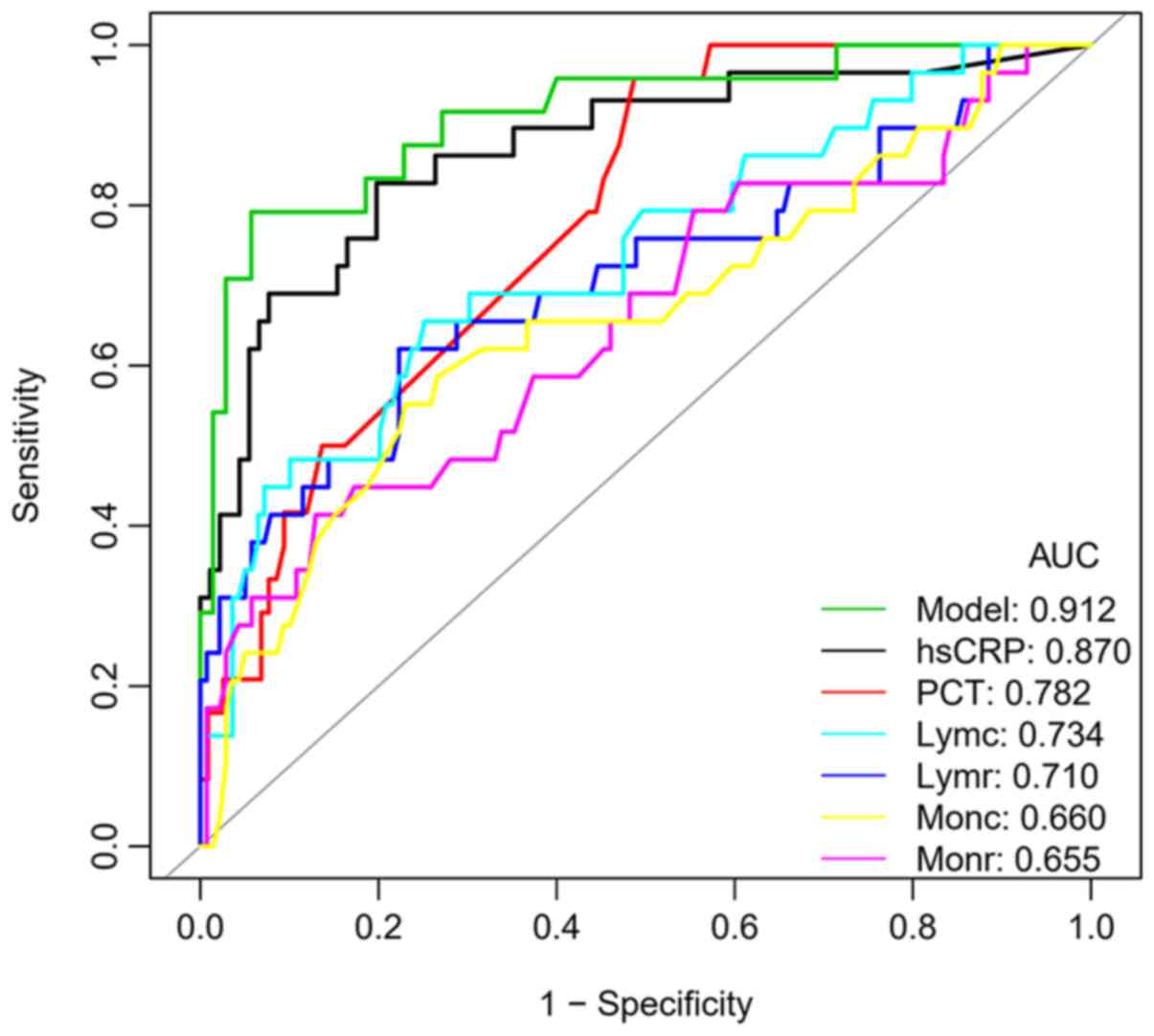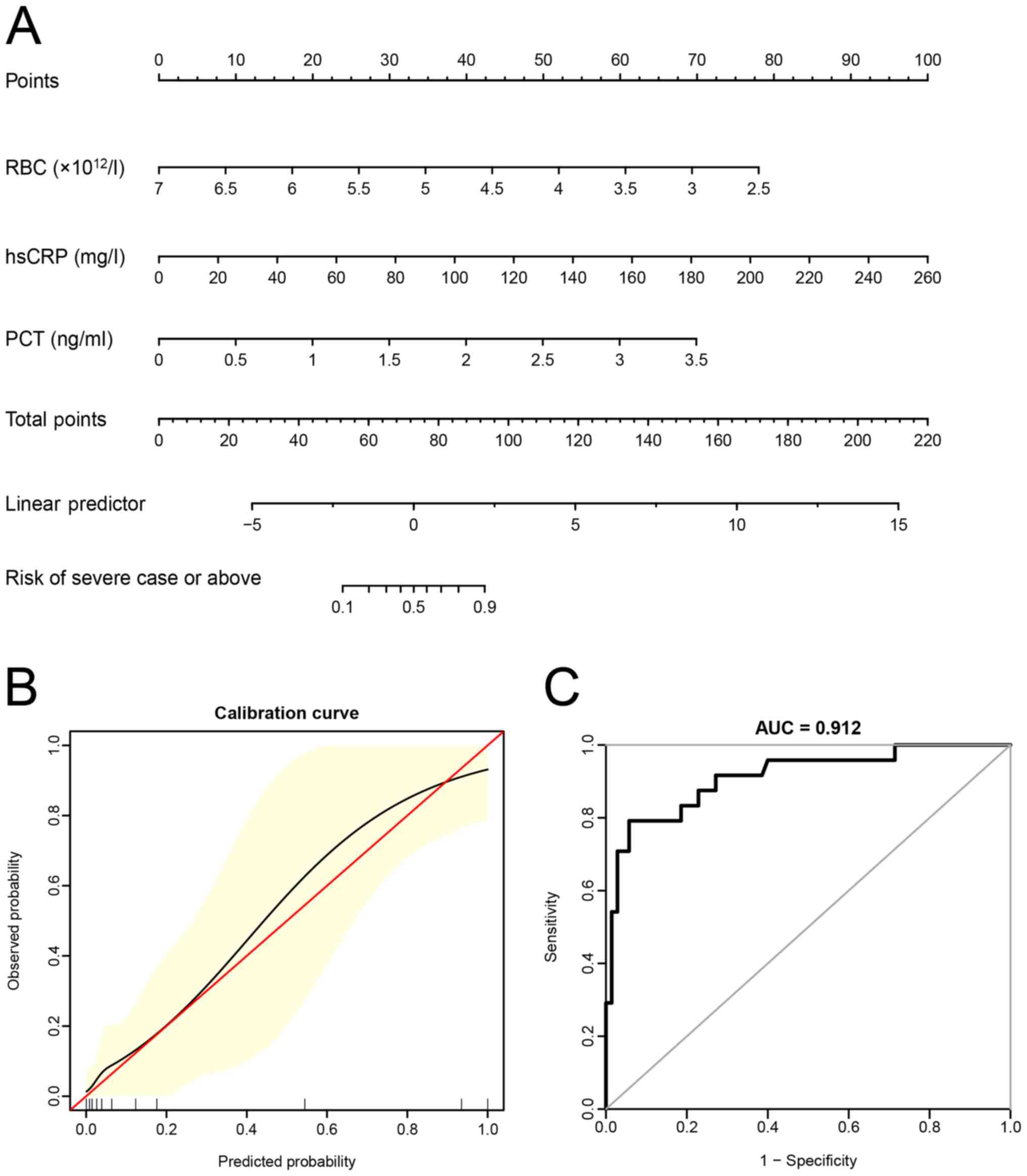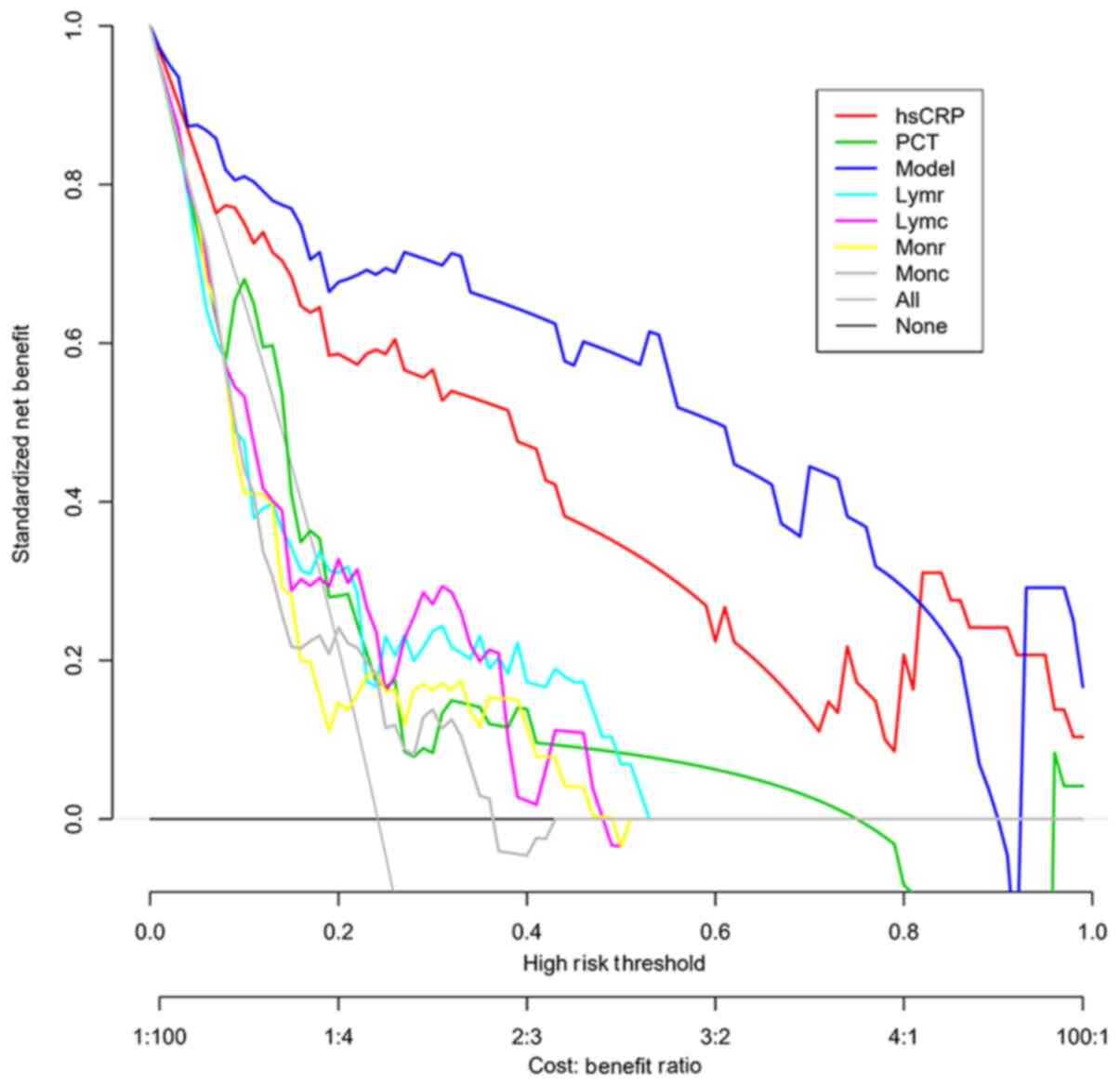|
1
|
Fan Z, Chen L, Li J, Cheng X, Yang J, Tian
C, Zhang Y, Huang S, Liu Z and Cheng J: Clinical features of
COVID-19-related liver functional abnormality. Clin Gastroenterol
Hepatol. 18:1561–1566. 2020.PubMed/NCBI View Article : Google Scholar
|
|
2
|
Wu J, Song S, Cao HC and Li LJ: Liver
diseases in COVID-19: Etiology, treatment and prognosis. World J
Gastroenterol. 26:2286–2293. 2020.PubMed/NCBI View Article : Google Scholar
|
|
3
|
Martins-Filho PR, Tavares CSS and Santos
VS: Factors associated with mortality in patients with COVID-19. A
quantitative evidence synthesis of clinical and laboratory data.
Eur J Intern Med. 76:97–99. 2020.PubMed/NCBI View Article : Google Scholar
|
|
4
|
Wiersinga WJ, Rhodes A, Cheng AC, Peacock
SJ and Prescott HC: Pathophysiology, transmission, diagnosis, and
treatment of coronavirus disease 2019 (COVID-19): A review. JAMA.
324:782–793. 2020.PubMed/NCBI View Article : Google Scholar
|
|
5
|
Liu Q, Song NC, Zheng ZK, Li JS and Li SK:
Laboratory findings and a combined multifactorial approach to
predict death in critically ill patients with COVID-19: A
retrospective study. Epidemiol Infect. 148(e129)2020.PubMed/NCBI View Article : Google Scholar
|
|
6
|
Wang F, Hou H, Luo Y, Tang G, Wu S, Huang
M, Liu W, Zhu Y, Lin Q, Mao L, et al: The laboratory tests and host
immunity of COVID-19 patients with different severity of illness.
JCI Insight. 5(e137799)2020.PubMed/NCBI View Article : Google Scholar
|
|
7
|
Vultaggio A, Vivarelli E, Virgili G,
Lucenteforte E, Bartoloni A, Nozzoli C, Morettini A, Berni A,
Malandrino D, Rossi O, et al: Prompt predicting of early clinical
deterioration of moderate-to-severe COVID-19 patients: Usefulness
of a combined score using IL-6 in a preliminary study. J Allergy
Clin Immunol Pract. 8:2575–2581.e2. 2020.PubMed/NCBI View Article : Google Scholar
|
|
8
|
Chen G, Wu D, Guo W, Cao Y, Huang D, Wang
H, Wang T, Zhang X, Chen H, Yu H, et al: Clinical and immunological
features of severe and moderate coronavirus disease 2019. J Clin
Invest. 130:2620–2629. 2020.PubMed/NCBI View Article : Google Scholar
|
|
9
|
Rodriguez-Morales AJ, Cardona-Ospina JA,
Gutiérrez-Ocampo E, Villamizar-Peña R, Holguin-Rivera Y,
Escalera-Antezana JP, Alvarado-Arnez LE, Bonilla-Aldana DK,
Franco-Paredes C, Henao-Martinez AF, et al: Clinical, laboratory
and imaging features of COVID-19: A systematic review and
meta-analysis. Travel Med Infect Dis. 34(101623)2020.PubMed/NCBI View Article : Google Scholar
|
|
10
|
Zhang B, Zhang J, Chen H, Chen L, Chen Q,
Li M, Chen Z, You J, Yang K and Zhang S: Novel coronavirus disease
2019 (COVID-19): Relationship between chest CT scores and
laboratory parameters. Eur J Nucl Med Mol Imaging. 47:2083–2089.
2020.PubMed/NCBI View Article : Google Scholar
|
|
11
|
Wynants L, Van Calster B, Collins GS,
Riley RD, Heinze G, Schuit E, Bonten MMJ, Damen JAA, Debray TPA, De
Vos M, et al: Prediction models for diagnosis and prognosis of
covid-19 infection: Systematic review and critical appraisal. BMJ.
369(m1328)2020.PubMed/NCBI View Article : Google Scholar
|
|
12
|
Lorente-Ros A, Monteagudo Ruiz JM, Rincón
LM, Ortega Pérez R, Rivas S, Martínez-Moya R, Sanromán MA, Manzano
L, Alonso GL, Ibáñez B and Zamorano JL: Myocardial injury
determination improves risk stratification and predicts mortality
in COVID-19 patients. Cardiol J. 27:489–496. 2020.PubMed/NCBI View Article : Google Scholar
|
|
13
|
Qin L, Yang Y, Cao Q, Cheng Z, Wang X, Sun
Q, Yan F, Qu J and Yang W: A predictive model and scoring system
combining clinical and CT characteristics for the diagnosis of
COVID-19. Eur Radiol. 30:6797–6807. 2020.PubMed/NCBI View Article : Google Scholar
|
|
14
|
Chen X, Tang Y, Mo Y, Li S, Lin D, Yang Z,
Yang Z, Sun H, Qiu J, Liao Y, et al: A diagnostic model for
coronavirus disease 2019 (COVID-19) based on radiological semantic
and clinical features: A multi-center study. Eur Radiol.
30:4893–4902. 2020.PubMed/NCBI View Article : Google Scholar
|
|
15
|
Released by National Health Commission
& National Administration of Traditional Chinese Medicine on
March 3, 2020. Diagnosis and treatment protocol for novel
coronavirus pneumonia (Trial Version 7). Chin Med J (Engl).
133:1087–1095. 2020.PubMed/NCBI View Article : Google Scholar
|
|
16
|
DeLong ER, DeLong DM and Clarke-Pearson
DL: Comparing the areas under two or more correlated receiver
operating characteristic curves: A nonparametric approach.
Biometrics. 44:837–845. 1988.PubMed/NCBI
|
|
17
|
Liu YP, Li GM, He J, Liu Y, Li M, Zhang R,
Li YL, Wu YZ and Diao B: Combined use of the
neutrophil-to-lymphocyte ratio and CRP to predict 7-day disease
severity in 84 hospitalized patients with COVID-19 pneumonia: A
retrospective cohort study. Ann Transl Med. 8(635)2020.PubMed/NCBI View Article : Google Scholar
|
|
18
|
Su TH and Kao JH: The clinical
manifestations and management of COVID-19-related liver injury. J
Formos Med Assoc. 119:1016–1018. 2020.PubMed/NCBI View Article : Google Scholar
|
|
19
|
Hu L, Chen S, Fu Y, Gao Z, Long H, Ren HW,
Zuo Y, Wang J, Li H, Xu QB, et al: Risk factors associated with
clinical outcomes in 323 coronavirus disease 2019 (COVID-19)
hospitalized patients in Wuhan, China. Clin Infect Dis.
71:2089–2098. 2020.PubMed/NCBI View Article : Google Scholar
|
|
20
|
Su M, Yuan J, Peng J, Wu M, Yang Y and
Peng YG: Clinical prediction model for mortality of adult diabetes
inpatients with COVID-19 in Wuhan, China: A retrospective pilot
study. J Clin Anesth. 66(109927)2020.PubMed/NCBI View Article : Google Scholar
|
|
21
|
Wang F, Hou H, Wang T, Luo Y, Tang G, Wu
S, Zhou H and Sun Z: Establishing a model for predicting the
outcome of COVID-19 based on combination of laboratory tests.
Travel Med Infect Dis. 36(101782)2020.PubMed/NCBI View Article : Google Scholar
|
|
22
|
Tian S, Liu H, Liao M, Wu Y, Yang C, Cai
Y, Peng Z and Xiao SY: Analysis of mortality in patients with
COVID-19: Clinical and laboratory parameters. Open Forum Infect
Dis. 7(ofaa152)2020.PubMed/NCBI View Article : Google Scholar
|
|
23
|
Liu J, Li S, Liu J, Liang B, Wang X, Wang
H, Li W, Tong Q, Yi J, Zhao L, et al: Longitudinal characteristics
of lymphocyte responses and cytokine profiles in the peripheral
blood of SARS-CoV-2 infected patients. EBioMedicine.
55(102763)2020.PubMed/NCBI View Article : Google Scholar
|
|
24
|
Wang L, Liu Y, Zhang T, Jiang Y, Yang S,
Xu Y, Song R, Song M, Wang L, Zhang W, et al: Differentiating
between 2019 novel coronavirus pneumonia and influenza using a
nonspecific laboratory marker-based dynamic nomogram. Open Forum
Infect Dis. 7(ofaa169)2020.PubMed/NCBI View Article : Google Scholar
|
|
25
|
Soraya GV and Ulhaq ZS: Crucial laboratory
parameters in COVID-19 diagnosis and prognosis: An updated
meta-analysis. Med Clin (Barc). 155:143–151. 2020.PubMed/NCBI View Article : Google Scholar
|
|
26
|
Thomas T, Stefanoni D, Dzieciatkowska M,
Issaian A, Nemkov T, Hill RC, Francis RO, Hudson KE, Buehler PW,
Zimring JC, et al: Evidence of structural protein damage and
membrane lipid remodeling in red blood cells from COVID-19
patients. J Proteome Res. 19:4455–4469. 2020.PubMed/NCBI View Article : Google Scholar
|
|
27
|
Wang K, Zuo P, Liu Y, Zhang M, Zhao X, Xie
S, Zhang H, Chen X and Liu C: Clinical and laboratory predictors of
in-hospital mortality in patients with coronavirus disease-2019: A
cohort study in Wuhan, China. Clin Infect Dis. 71:2079–2088.
2020.PubMed/NCBI View Article : Google Scholar
|
|
28
|
Sager R, Kutz A, Mueller B and Schuetz P:
Procalcitonin-guided diagnosis and antibiotic stewardship
revisited. BMC Med. 15(15)2017.PubMed/NCBI View Article : Google Scholar
|
|
29
|
Hu R, Han C, Pei S, Yin M and Chen X:
Procalcitonin levels in COVID-19 patients. Int J Antimicrob Agents.
56(106051)2020.PubMed/NCBI View Article : Google Scholar
|
|
30
|
Lippi G and Plebani M: Procalcitonin in
patients with severe coronavirus disease 2019 (COVID-19): A
meta-analysis. Clin Chim Acta. 505:190–191. 2020.PubMed/NCBI View Article : Google Scholar
|
|
31
|
Liu F, Li L, Xu M, Wu J, Luo D, Zhu Y, Li
B, Song X and Zhou X: Prognostic value of interleukin-6, C-reactive
protein, and procalcitonin in patients with COVID-19. J Clin Virol.
127(104370)2020.PubMed/NCBI View Article : Google Scholar
|
|
32
|
Fang FC, Naccache SN and Greninger AL: The
laboratory diagnosis of COVID-19-frequently-asked questions. Clin
Infect Dis, Jun 8, 2020 (Epub ahead of print).
|
|
33
|
Chen R, Sang L, Jiang M, Yang Z, Jia N, Fu
W, Xie J, Guan W, Liang W, Ni Z, et al: Longitudinal hematologic
and immunologic variations associated with the progression of
COVID-19 patients in China. J Allergy Clin Immunol. 146:89–100.
2020.PubMed/NCBI View Article : Google Scholar
|












